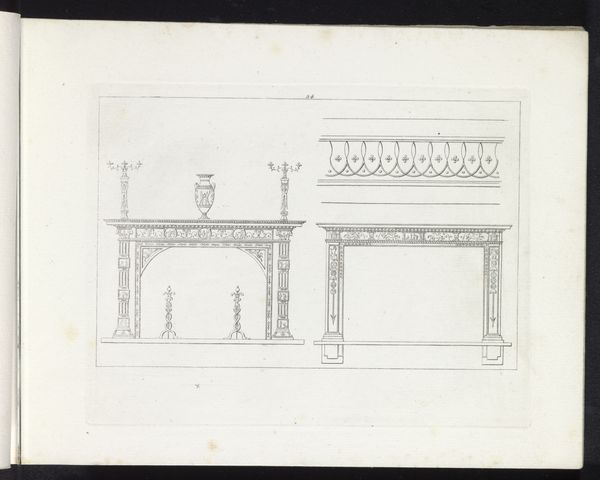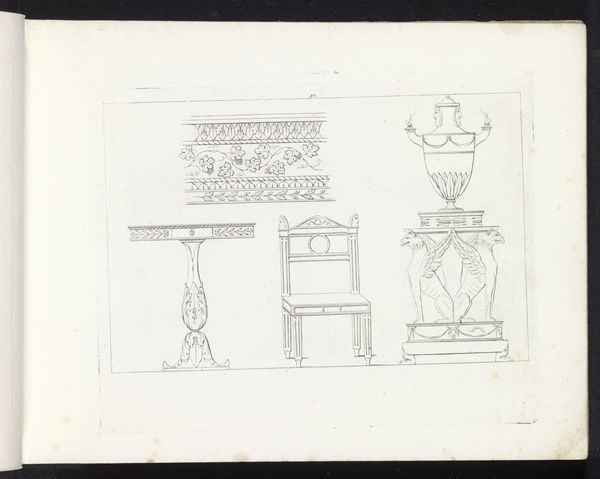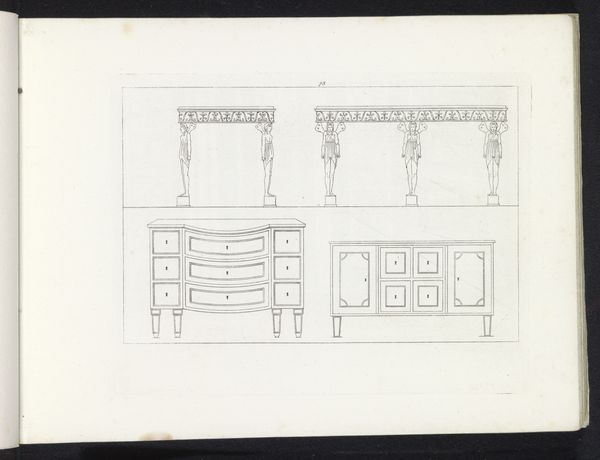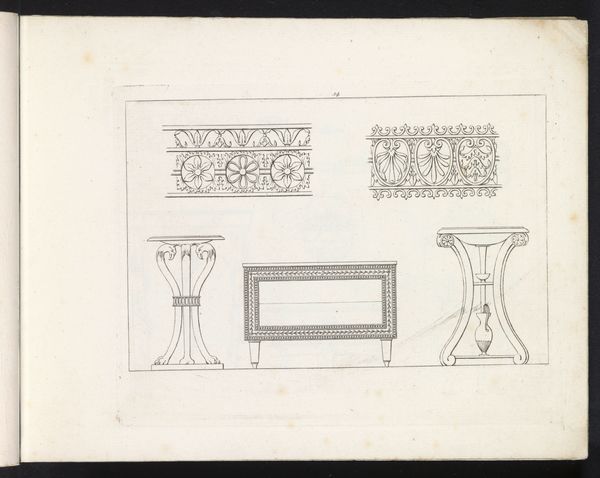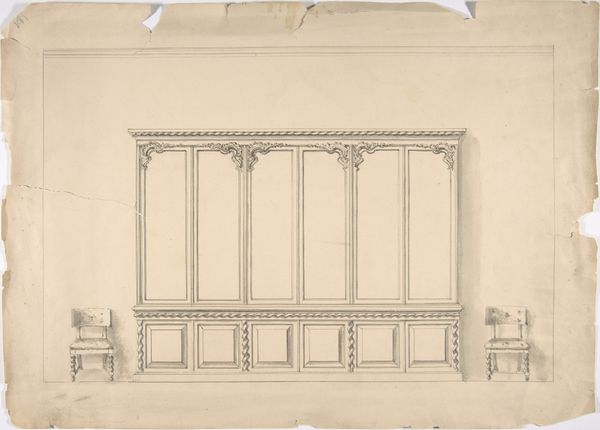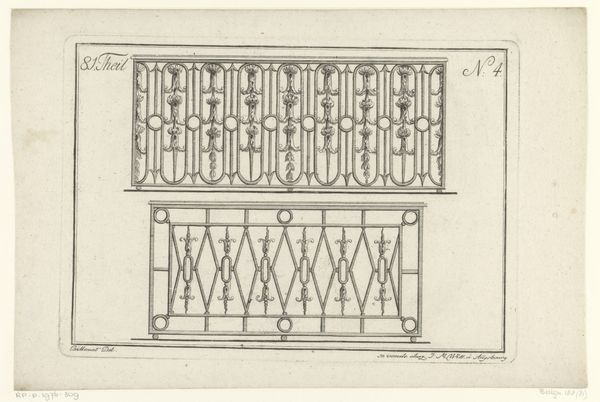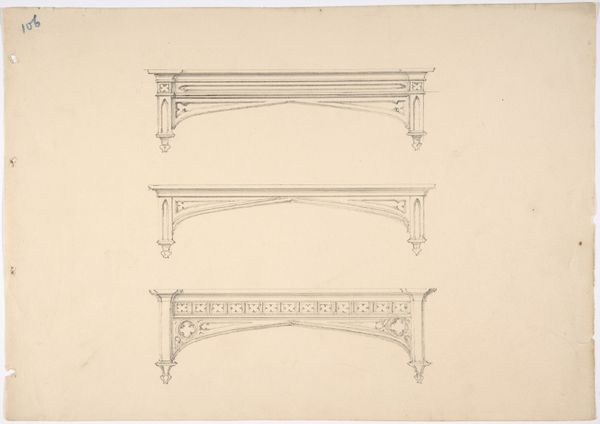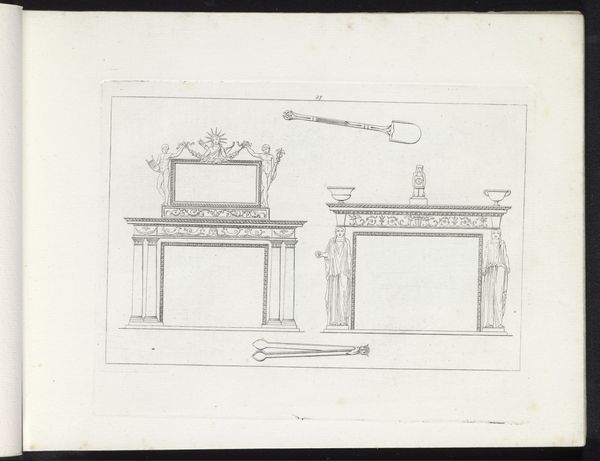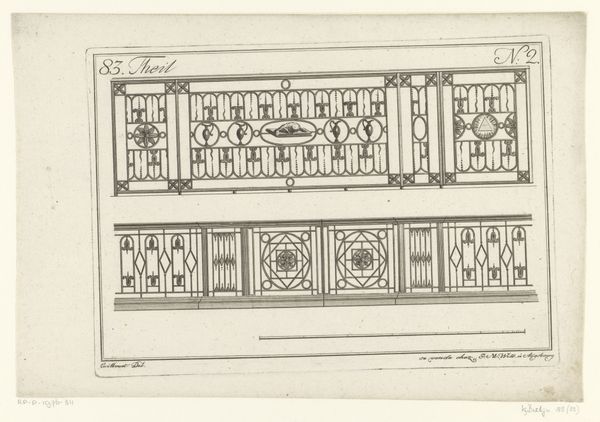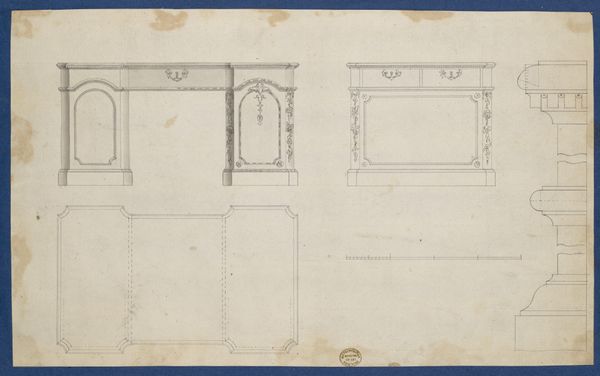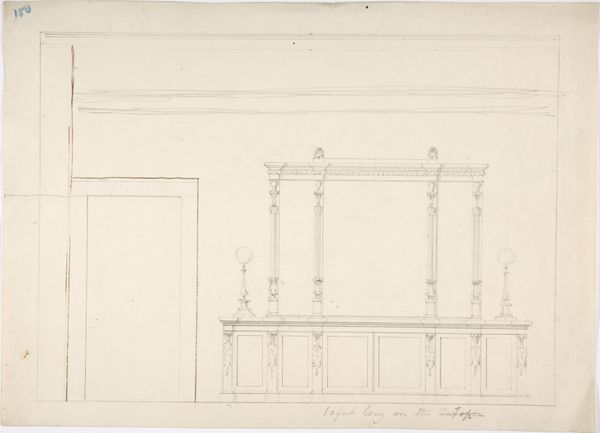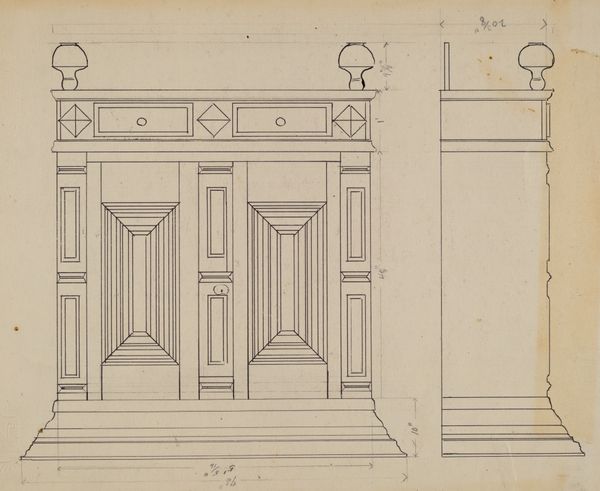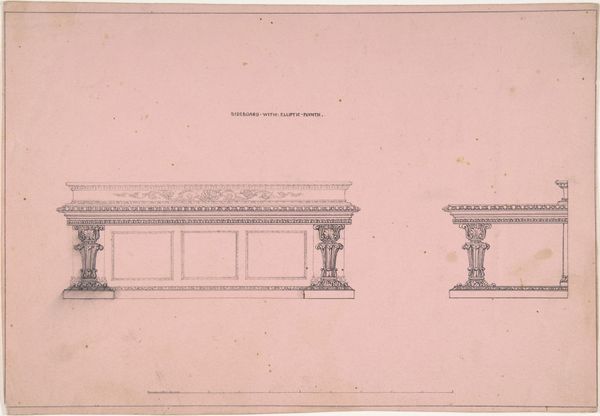
drawing, paper, ink
#
drawing
#
paper
#
ink
#
geometric
#
academic-art
Dimensions: height 169 mm, width 217 mm
Copyright: Rijks Museum: Open Domain
Curator: The etching, “Twee tafels, een bed en een bankje” from 1817 by Pietro Ruga, rendered in ink on paper, gives us several elevations of household furnishings. I am struck by the rigid symmetry and the artist's concern with capturing its geometry. How do you find it? Editor: I am intrigued by its coldness; it looks so architectural, more like blueprints than objects to actually live with. What can we infer about its making from the visible process and its historical time? Curator: Let's consider the social context in which Ruga was working. The emphasis on classical design reflects a broader movement toward Neoclassicism that directly influences the methods of production. Notice how the precise ink lines are rendered almost mechanically. Do these objects tell us anything about the aspirations or economics of the owner? Editor: Well, that is very ornate furniture... surely, not made for everybody at the time! And looking at how exact all these lines are makes me wonder what the work conditions of the artist were. What was considered valuable, and what did he have to do to get to such a high standard of neatness? Curator: Indeed, the drawings hint at a specific kind of luxury intended for elite consumption. Now, thinking about the materiality: what’s the significance, perhaps, of depicting them only through linear construction? Editor: Is it possible it was intended to control expenses by reducing unnecessary manufacturing costs while projecting opulence for social mobility? The image almost seems to invite mass production or efficient methods that optimize for affordability. Curator: Interesting interpretation. This work prompts reflection on labor and the material realities that underpin even the most idealized designs. Editor: This exercise highlights how art-making is fundamentally connected with socio-economic dimensions beyond aesthetics. Thank you.
Comments
No comments
Be the first to comment and join the conversation on the ultimate creative platform.
